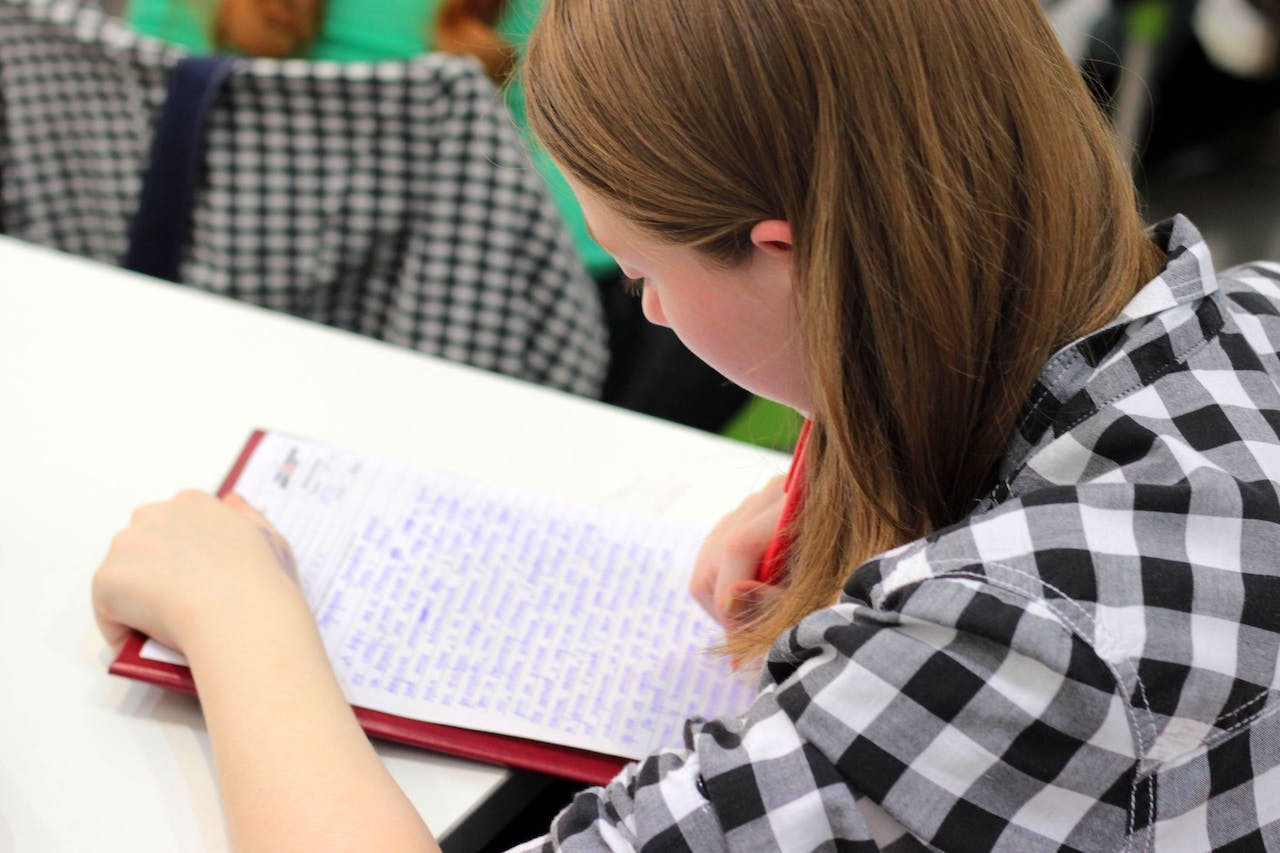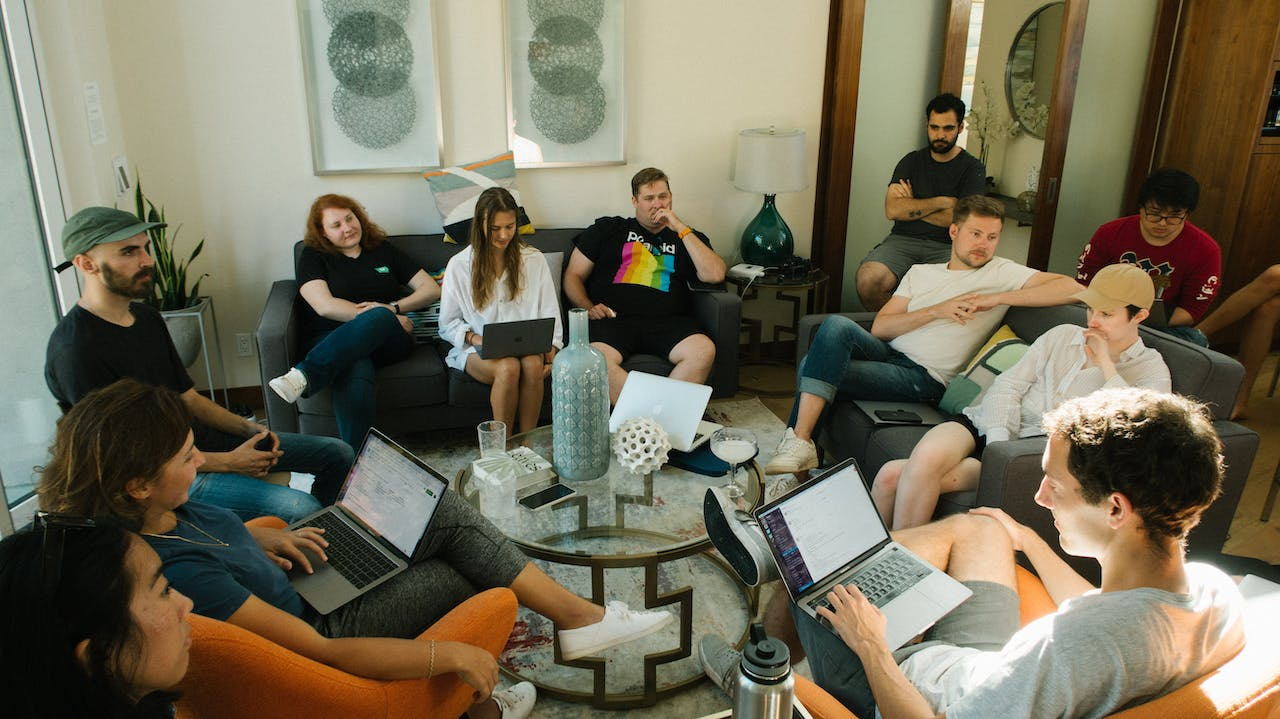
Learning Spanish is an exciting journey, but let’s address the question: “How long does it take to learn Spanish?” The road to fluency is like a scenic route, and the time it takes can vary for each individual. It may take about six months of dedicated study to reach an intermediate level. But remember, this isn’t a one-size-fits-all scenario. Your progress depends on factors like prior Spanish learning experience, dedication, and exposure to the language.
In perspective, achieving basic conversational skills might take around 150–200 hours. If you aim for native Spanish skills fluency, you’re looking at a more extensive commitment of around 1,500 hours or more. The Foreign Service Institute estimates that Spanish, a Romance language of Latin origin, falls in the category of official languages requiring moderate effort for English speakers. While it is safe to learn a Germanic language, Spanish tends to be more accessible due to similarities in vocabulary and structure.
Beyond classroom instruction, having an actual speaking practice is essential. Spend time with Spanish-speaking friends, engage in language exchanges, or keep a language progress journal. Invest in actual speaking practice to truly understand your target language and achieve fluency. One hour of conversation practice with a friend or a Spanish teacher can be more beneficial than several hours of solo study. Remember, it’s not just about how many hours you spend but also how effectively you use them.
How Hard Is The Spanish Language To Learn?

Learning Spanish can vary in difficulty depending on several factors, including your native language, your learning experience, and your methods. If you’re an English speaker, you’re in luck. Spanish is considered one of the most accessible languages for English speakers due to their shared Latin origin.
Here are some factors to consider:
How Much Time You Spend Learning The Language

Learning a language requires consistent effort over time, and the amount of time you dedicate each day plays a crucial role in your progress. If you’re aiming to learn Spanish efficiently, regular practice is critical. Here are some factors to consider regarding the time spent learning the language:
- Daily Commitment: Consistency is more important than cramming. Aim for at least 30 minutes to an hour of daily dedicated language learning. Short, regular sessions are more effective than sporadic, lengthy ones.
- Frequency Over Duration: It’s better to have short, frequent study sessions than one long session per week. This helps reinforce what you’ve learned and keeps your language skills active.
- Balancing Activities: Beyond the recommended daily time, consider incorporating various activities into your routine. Mix listening, reading, writing, and speaking to develop a well-rounded skill set.
- Language Progress Journal: Keep a journal to track your Spanish learning journey and identify areas for improvement. This self-reflection can be a motivating factor in your language-learning journey.
- Flexibility: While consistency is crucial, be flexible in your approach. If you have a busy day, even spending 15 minutes reviewing vocabulary or listening to a short podcast can contribute to your progress.
How Willing You Are To Learn

Your willingness and motivation to learn Spanish are the ones that determine the success of your Spanish fluency journey. Here’s how your attitude towards learning can impact the process:
- Intrinsic Motivation: Your intrinsic motivation, or the internal desire to learn, is a powerful driver. If you are genuinely interested in the Spanish language, its culture, or connecting with Spanish speakers, your motivation will likely be higher.
- Consistency in Practice: Your willingness to consistently engage with Spanish through daily study sessions or immersion activities is crucial. Regular practice reinforces your learning and prevents the loss of knowledge.
- Overcoming Challenges: Language learning may come with challenges, such as difficulty understanding complex sentences or dealing with the language barrier. A positive mindset toward challenges significantly contributes to your progress.
- Seeking Support: Engaging with a language partner, joining language learning communities, or having friends in the Spanish-speaking community can provide valuable support and encouragement. Social interaction enhances your practical language skills and fosters a sense of community.
- Celebrating Progress: Acknowledge and celebrate your achievements, whether big or small. Keeping a language progress journal can help you see how far you’ve come, reinforcing your motivation to continue learning.
Environment

Your environment significantly influences the time and effort you invest in learning Spanish. If you’re living in a Spanish-speaking country or surrounded by friends and family who speak Spanish, you’ll likely have more immersive learning opportunities. In such an environment, daily interactions, cultural expressions, and exposure to the language become part of your daily life. This constant exposure can accelerate your Spanish words journey, allowing you to reach conversational fluency more efficiently.
Conversely, you may need to invest more time in structured learning and practice if you’re not in a Spanish-speaking community. Seeking out language partners, participating in language exchange programs, or joining online classes can help bridge the gap. A daily conversation or improving your writing skills in Spanish while listening to songs, stories, or talks can also help.
Your social circle also plays a pivotal role in the learning process. If your friends and family are fluent in Spanish, you have the advantage of regular communication in the language. This enhances your vocabulary and provides opportunities to understand complex sentences and cultural nuances.
Your Goal In Learning Spanish

Your goal in learning Spanish is crucial in determining the depth of your language acquisition. Whether you aim to live in a Spanish-speaking country or specifically in Spain, your objectives influence the intensity and focus of your learning journey. If your goal is to live in a Spanish-speaking country, you must achieve a level of proficiency that allows you to have a smooth life, understand complex sentences, and communicate comfortably.
If your focus is on residing in Spain, additional considerations may come into play. Achieving native-level fluency or understanding regional variations in Spain’s language can influence your learning journey. Specific goals, such as finding employment, engaging in local cultural expressions, and building connections with Spanish speakers, will influence the time and effort you invest in learning. Understanding the context in which you plan to use Spanish in a professional setting or within a local community helps tailor your language learning journey to meet your specific needs and aspirations.
Your Mother Tongue

The role of one’s mother tongue is essential in learning Spanish. Individuals whose native language shares similarities with Spanish, especially in terms of vocabulary, grammar, or linguistic roots, often find it easier to grasp the nuances of the language.
For example, English speakers may find it easier to learn Spanish due to their common origin and language structure than the average person who does not have English as their first language. The similarities between the mother tongue and Spanish can help learners understand language patterns, making acquiring new vocabulary and comprehending grammatical structures more intuitive.
Level of Fluency You Want To Achieve

Your goal of learning Spanish may be influenced by factors such as whether you aim to live in a Spanish-speaking country, perhaps for work or personal reasons. The desire to experience life in Spain or other Spanish-speaking nations can drive your language-learning journey.
Achieving a basic conversational level may be sufficient for daily interactions, but if your goal is complete fluency or native-level proficiency, it often requires a more prolonged commitment. Whether for travel, work, or connecting with Spanish-speaking communities, clarifying your specific objectives can help tailor your learning approach to meet your unique needs and aspirations.
Preferred Method of Learning Spanish

The method of learning Spanish is a critical factor influencing the effectiveness and speed of language acquisition. Employing a well-rounded approach that includes a mix of resources, such as apps, textbooks, immersive experiences, and regular conversation practice with native speakers, can enhance the learning process.
Utilizing various methods allows learners to engage with the language from different angles, reinforcing vocabulary, grammar, and cultural expressions. Tailoring the learning method to individual preferences and adapting to different aspects of language acquisition, including listening, speaking, reading, and writing, contributes to a comprehensive and efficient learning experience.
Here are some examples of methods to learn languages and become a fluent speaker:
Learning By Yourself
Learning Spanish yourself is an achievable goal with the right resources and dedication. The estimated time to reach conversational fluency, or an intermediate level, largely depends on your consistency and the effectiveness of your study methods.
One hour of daily conversation practice can significantly expedite the learning process, whether through language exchange partners, online platforms, or language apps. Leveraging resources like textbooks, online courses, and Spanish-language media complements independent study.
Developing good listening skills by exposing yourself to various accents and practising with native speakers helps in understanding complex sentences. Keeping a language progress journal, setting realistic goals, and spending dedicated time studying independently are key components of a successful self-directed language learning journey.
Learning With Tutor
Learning Spanish with a tutor can enhance the efficiency of your language acquisition. You can progress faster with regular sessions tailored to your needs and skill level. The estimated time to reach conversational fluency, or an intermediate level, depends on factors like the frequency of lessons and your dedication.
Tutor-led sessions with additional resources and consistent self-study contribute to a more comprehensive learning experience. Enough conversation practice with your tutor and leveraging their expertise in Spanish grammar and vocabulary can expedite your language learning journey.
Learning With Interlocutor
Learning Spanish with an interlocutor, someone with whom you regularly practice conversation, is valuable. The estimated time to achieve conversational fluency, or an intermediate level, depends on consistent practice and exposure.
Regular conversation sessions, preferably with a native speaker, help improve practice speaking and listening skills. These interactions with resources like language apps, podcasts, and relevant reading materials enhance vocabulary and cultural understanding. Consistent practice and varied resources are key to creating a well-rounded learning experience.
Enroll in Traditional Courses
Enrolling in traditional Spanish courses provides a structured learning environment. The estimated time to reach conversational fluency, or an intermediate level, depends on the course duration and your commitment. Consistent attendance, completing assignments, and participating in classroom discussions are essential.
Utilizing additional resources like textbooks and apps, and practising with partners outside of class enhances the learning process. Combining traditional courses with diverse learning materials ensures a well-rounded approach to Spanish language acquisition.
Immersion at Home
Creating an immersion environment at home for learning Spanish involves daily exposure to the language. The estimated time to achieve conversational fluency or an intermediate level depends on consistent practice.
Surround yourself with Spanish by watching movies, listening to music, and reading books. Use language apps, practice regular conversation with native speakers, and set aside dedicated study time. Immersion at home fosters familiarity with cultural expressions and accelerates language acquisition, making the learning process more dynamic and efficient by having your time spent studying independently.
Immersion in Spanish-speaking Country
Immersing yourself in a Spanish-speaking country is a highly effective language-learning method. The estimated time to achieve conversational fluency or an intermediate level varies but can be relatively fast due to constant exposure.
Engage with locals, participate in daily life, and surround yourself with the language. Attend local events, take language classes, and practice speaking as much as possible. Utilize resources like language exchange partners and cultural activities, and immerse yourself in Spanish media. The key is to make the most of your time in the country by actively participating in real-life situations where Spanish is spoken, accelerating your language learning journey.
How Long Does It Take to Achieve Your Goals in Spanish?
Achieving your goals in Spanish depends on various factors, including your specific objectives. Here are some common goals in learning Spanish, along with estimated timelines:
Basic Conversational Level:
Estimated Time: 3–6 months
Explanation: A basic conversational level involves introducing yourself, asking and answering simple questions, and handling everyday scenarios. Regular practice and immersion activities can help you reach this level within a few months.
Intermediate Level:
Estimated Time: 6–12 months
Explanation: Achieving an intermediate level implies a broader vocabulary, understanding more complex sentences, and engaging in more extended conversations. It requires consistent study and exposure to various language resources.
Fluency in Everyday Conversations:
Estimated Time: 1-2 years
Explanation: Attaining fluency for everyday conversations involves a more extensive vocabulary, a better grasp of grammar, and increased confidence in speaking. Regular communication with native speakers and immersive experiences are crucial at this stage.
Professional working proficiency:
Estimated Time: 2–3 years
Explanation: To reach a professional working proficiency level, where you can use Spanish in a work setting, it typically takes a couple of years of dedicated study and practice. Immersing yourself in work-related language materials and scenarios can expedite this process.
Finding a Job in a Spanish-speaking country:
Estimated Time: 3–5 years
Explanation: Securing a job in a Spanish-speaking country requires language proficiency and an understanding of professional and cultural nuances. Networking, cultural immersion, and targeted job-search language practice contribute to this goal.
Passing an Official Exam (e.g., DELE):
Estimated Time: 1-2 years (for intermediate levels)
Explanation: Official exams, like the DELE (Diplomas of Spanish as a Foreign Language), often assess proficiency levels. Achieving success in such exams usually requires a solid foundation and dedicated study time focused on exam preparation.
Speaking with Native Speakers Comfortably:
Estimated Time: 6–12 months
Explanation: Comfortably conversing with native Spanish speakers involves overcoming the language barrier and understanding cultural nuances. Regular conversation practice, perhaps through language exchange, can expedite this process.
These timelines are approximate and can vary based on individual factors such as language learning experience, study methods, and the amount of time dedicated to learning. Setting realistic expectations and staying consistent in your efforts are key to achieving your language learning goals in Spanish.
Things to Consider When Learning Spanish
When you are eager to learn a new language like Spanish learning, make sure to know the things that you need to consider when you learn Spanish language:
Set Achievable Goals

Setting achievable goals in language learning provides a clear roadmap for progress, fostering motivation and a sense of accomplishment. It helps you know how many hours you want to spend learning Spanish. Clear objectives help learners stay focused, track their advancement, and tailor their study methods. This targeted approach ensures a more efficient and satisfying language learning experience.
Immerse Yourself

Immersing yourself in learning Spanish provides constant exposure to the language, fostering rapid acquisition. Direct engagement with native Spanish speakers, cultural experiences, and daily use of the language create a dynamic learning environment, accelerating your journey towards fluency.
Read for Pleasure

Reading for pleasure while learning Spanish is beneficial, as it makes the language more enjoyable and engaging. It exposes learners to diverse vocabulary, cultural expressions, and writing skills, enhancing language comprehension. Pleasure reading also fosters a love for the language, motivating consistent practice and making learning more enjoyable and sustainable.
Remind Yourself Why You Want To Learn Spanish

Reminding yourself why you want to learn Spanish helps maintain motivation and focus. Understanding your personal goals, whether for travel, work, or connecting with Spanish-speaking communities, provides a clear purpose that keeps you committed throughout your language-learning journey.
Always Be Patient

Patience is crucial in learning Spanish, as language acquisition takes time and consistent effort. Mastery requires gradual progress, and frustration may arise. Being patient allows for a positive mindset, making learning more enjoyable and effective. Language involves continuous learning, and patience ensures a sustained commitment, fostering a deeper and more lasting understanding of Spanish.
Can I Learn Spanish in 6 Months?
Yes, it is possible to learn Spanish in 6 months, but the extent of proficiency you can achieve within that time frame depends on several factors. These factors include your prior experience with language learning, the time you dedicate daily, the resources you use, and your immersion in the language.
While some individuals may reach a basic conversational level within this time, becoming completely fluent or achieving native-level fluency is typically a more extended process that may take several years. Regular conversation practice, exposure to cultural expressions, and a consistent study routine are essential to significant progress in a relatively short period.
Conclusion
In conclusion, learning Spanish is a dynamic process that depends on a variety of factors, including environment, motivation, and methods. Each strategy has particular advantages, whether it is self-directed, tutor-led, or through immersion.
Patience is key, given the time required for language mastery. Ultimately, individual goals, such as achieving conversational fluency or living in a Spanish-speaking country, shape the learning process. By understanding these factors and employing a well-rounded approach with consistent practice, learners can maximise their efforts in mastering the Spanish language.


Sorry, the comment form is closed at this time.